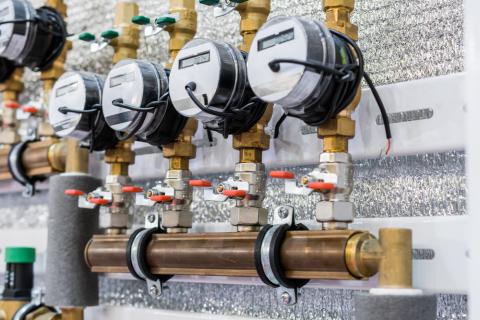In the past few decades, technological advances have changed the way we live and work. Many of these developments have helped us to become more efficient – we can now send an email instead of a fax, for example, or join a video call instead of travelling to a meeting.
And when it comes to becoming more water-efficient in the workplace, there are a number of tech solutions available to help us to become more aware of the water we’re using and reduce our consumption. By investing in these technologies, you could not only save water, but also make savings on your water bills.
Here are just a few of the ways that technology can help us to…
Use only the water we need
You may be surprised at the amount of water that’s unnecessarily wasted in your office every day. A tap that is left running will waste around six litres a minute!
Sensor technology can be particularly useful for preventing staff from using more water than they really need. Motion sensor taps, for example, will automatically stop the flow of water when you remove your hands from under the sensor, so you can’t accidentally leave the tap running. You could also install passive infra-red (PIR) sensors to urinals, as they will maintain the flush level when in use, and stop flushing when they’re vacant.
Monitor our water usage
Many businesses have already installed smart energy meters in an effort to keep their energy bills to a minimum, but you may not know that you can also use smart meters to track your water consumption.
Automated Meter Reading (AMR) meters record your consumption every 15 minutes, which gives you precise usage data and could enable you to gain a more granular view of your consumption. Once you have a good understanding of how much water you’re currently using, you can review your data to identify any areas where you could improve your efficiency. You should also look out for any sites or times of day with unusually high consumption, as this could indicate that you’ve got a leak.
Get the most out of our water
We all know that recycling is a great way to prevent waste, and many of us recycle everything from plastic to clothes. But have you ever thought about whether your wastewater could be reused?
You might consider installing a greywater system, which recycles your greywater – wastewater from sources like sinks, showers and dishwashers – for ‘non-potable’ use, such as flushing toilets or for irrigation. The system treats and disinfects greywater, which can carry bacteria, and it can then be reused directly on site.
As older toilets can use around 13 litres of water per flush, using recycled water in your toilets could make a substantial difference to your consumption.
Smart ways to save water
At SES Business Water, we’re committed to helping our customers become more water efficient – whether that’s by installing a smart meter or simply encouraging staff to adopt water-saving behaviours. For more resources on how to make your business more water-wise, visit our Insight pages.

